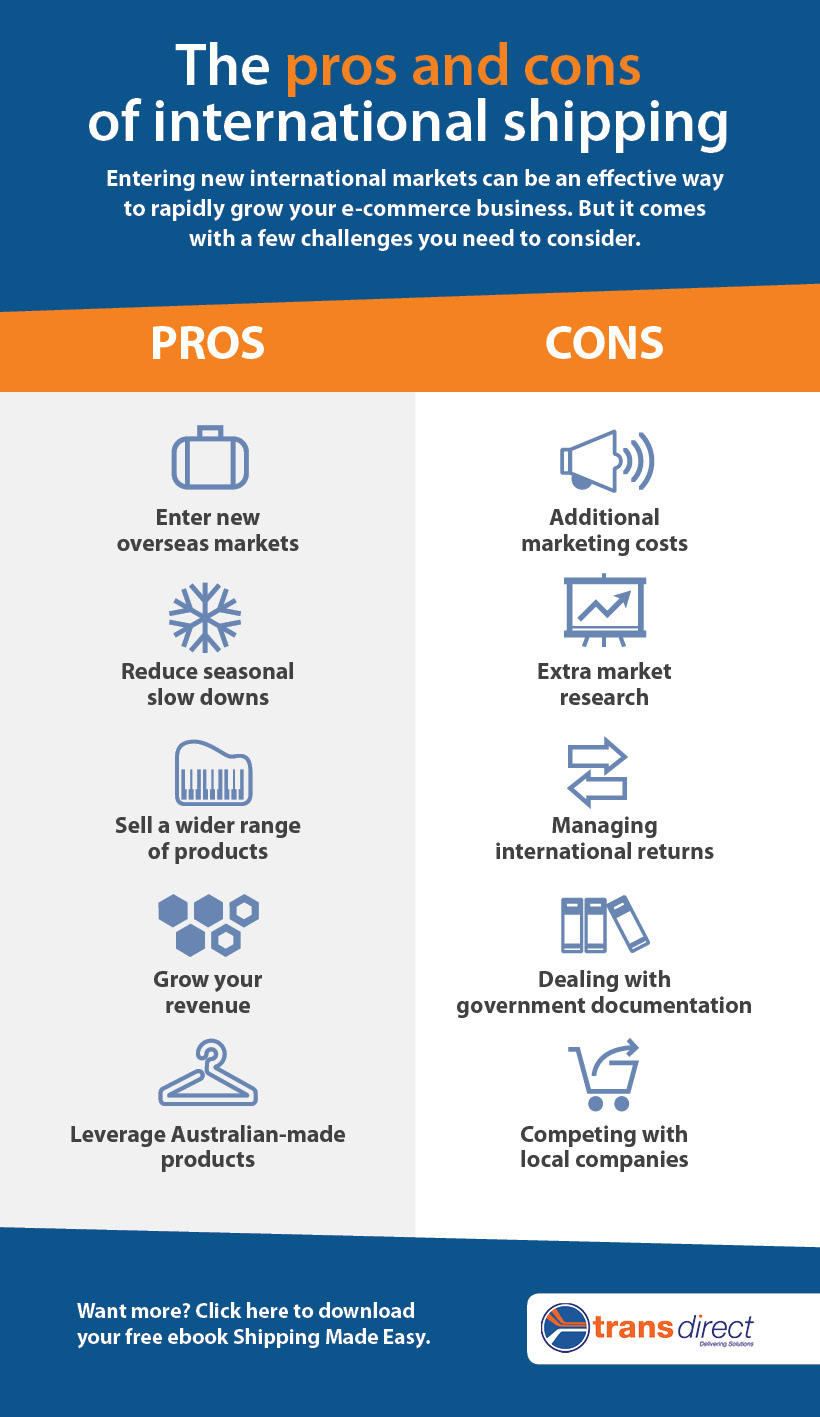
Entering new international markets can be an effective way to rapidly grow your e-commerce business. But it comes with a few challenges you need to consider.
Thinking about taking your e-commerce business global? (If you are, check out our 4 step guide first to decide whether you should ship overseas).
Implementing an international shipping policy comes with many positives including the opportunity to grow your business by selling a wider range of products to larger markets.
However, there are also some challenges – like additional marketing costs and a new set of local competitors – that you need to keep in mind.
Use this list of pros and cons of international shipping to help inform your decision:

The Pros
- Grow your business: It’s the obvious benefit but also the most important. Implementing an international shipping policy will open your e-commerce business to new overseas markets that will drive the growth of your business.
- Reduce seasonal slow downs: If you sell a seasonal product, shifting focus to the North Hemisphere summer when Australia moves into winter, for example, will help keep your sales steady year round.
- Sell a wider range of products: New markets come with different needs. Just because a product range may not have worked well in Australia doesn’t mean that international markets will not be more receptive.
- Reach larger markets: Retail is essentially a number’s game. Expanding beyond Australia’s modest population gives you access to a huge number of potential new customers in markets that dwarf your home-grown base.
- Leverage Australian-made products: Australian-made products carry a certain level of prestige in some overseas markets. Consider making this a central part of your international marketing strategy to create a point of difference from domestic competitors.
The Cons
- Additional marketing costs: You must spend money to make money, and that means investing in marketing campaigns that target international buyers in order to break into emerging new markets.
- Extra market research: New customers come with new expectations. Ensure you do your research so you know exactly the delivering timeframes, shipping costs and customer service support that international buyers expect.
- Managing international returns: Just like managing your domestic returns, you’ll need to implement an international returns policy that protects your bottom line against associated costs.
- Dealing with documentation: Most governments require documentation when you want to ship goods across borders. There are also varying duty rates between countries that you’ll need to account for.
- Competing with local companies: Entering an international market means you’ll also be competing against existing local companies with cheaper shipping rates. Focus on defining your unique selling point to overcome this.
Ready to start shipping? New customers get a quote, or existing members please sign in.
